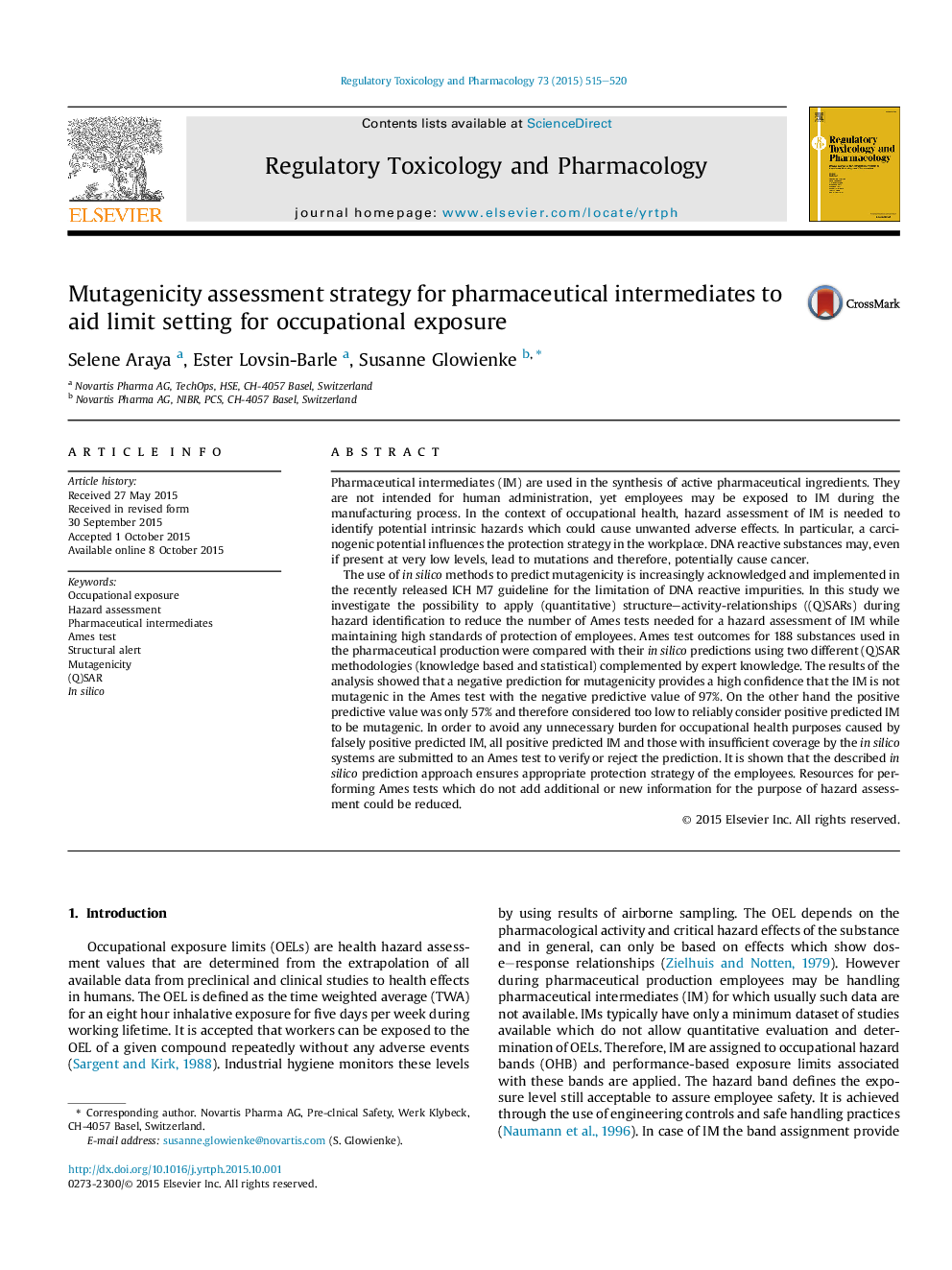| Article ID | Journal | Published Year | Pages | File Type |
|---|---|---|---|---|
| 5856150 | Regulatory Toxicology and Pharmacology | 2015 | 6 Pages |
â¢Combined in silico approach for mutagenicity prediction to ensure worker safety.â¢High negative predictive value of 97% achieved.â¢Number of Ames tests for intermediates in production reduced.â¢Decision tree to derive an exposure limit for intermediates presented.
Pharmaceutical intermediates (IM) are used in the synthesis of active pharmaceutical ingredients. They are not intended for human administration, yet employees may be exposed to IM during the manufacturing process. In the context of occupational health, hazard assessment of IM is needed to identify potential intrinsic hazards which could cause unwanted adverse effects. In particular, a carcinogenic potential influences the protection strategy in the workplace. DNA reactive substances may, even if present at very low levels, lead to mutations and therefore, potentially cause cancer.The use of in silico methods to predict mutagenicity is increasingly acknowledged and implemented in the recently released ICH M7 guideline for the limitation of DNA reactive impurities. In this study we investigate the possibility to apply (quantitative) structure-activity-relationships ((Q)SARs) during hazard identification to reduce the number of Ames tests needed for a hazard assessment of IM while maintaining high standards of protection of employees. Ames test outcomes for 188 substances used in the pharmaceutical production were compared with their in silico predictions using two different (Q)SAR methodologies (knowledge based and statistical) complemented by expert knowledge. The results of the analysis showed that a negative prediction for mutagenicity provides a high confidence that the IM is not mutagenic in the Ames test with the negative predictive value of 97%. On the other hand the positive predictive value was only 57% and therefore considered too low to reliably consider positive predicted IM to be mutagenic. In order to avoid any unnecessary burden for occupational health purposes caused by falsely positive predicted IM, all positive predicted IM and those with insufficient coverage by the in silico systems are submitted to an Ames test to verify or reject the prediction. It is shown that the described in silico prediction approach ensures appropriate protection strategy of the employees. Resources for performing Ames tests which do not add additional or new information for the purpose of hazard assessment could be reduced.
